Recently updated on February 26th, 2025 at 04:53 pm
Ireland is famous for lots of things, but few are more legendary than a pint of Guinness. One of the first things people do when they visit Ireland is enjoy a creamy pint of ‘the black stuff’ and we love taking our guests to the Guinness Brewery and Storehouse. With a story spanning over two centuries, from humble beginnings in Dublin to global success with the beer sold in over 150 countries, the history of Guinness is truly incredible. In celebration of Ireland’s national drink, we’re diving into the history of Guinness, from Arthur Guinness’ first brewery in the 18th century to now.
WATCH: Before you head to Dublin, learn how to pour the best pint of Guinness from beer specialist Alan Maxwell from the Guinness Storehouse in Dublin.
The 18th century – Arthur Guinness
The history of Guinness begins with Arthur Guinness, who was born in 1725 in County Kildare, Ireland. In 1755, he inherited £100 from his godfather Archbishop Price and used the money to lease a brewery in neighbouring Leixlip, Kildare. He brewed only ale at the time and by 1759, he had made enough money to rent the larger but disused St. James’s Gate Brewery in Dublin, signing a 9,000-year lease at £45 per year.
When you visit the Guinness Storehouse on the site of the original brewery, you can see the original lease with Arthur’s famous signature. That signature is still printed on every can and bottle of Guinness. The brewery was only four acres and had little brewing equipment, but Arthur built up a successful business and began exporting beer to England by 1769.
RELATED CONTENT: Ranked: The 10 best beer countries in the world
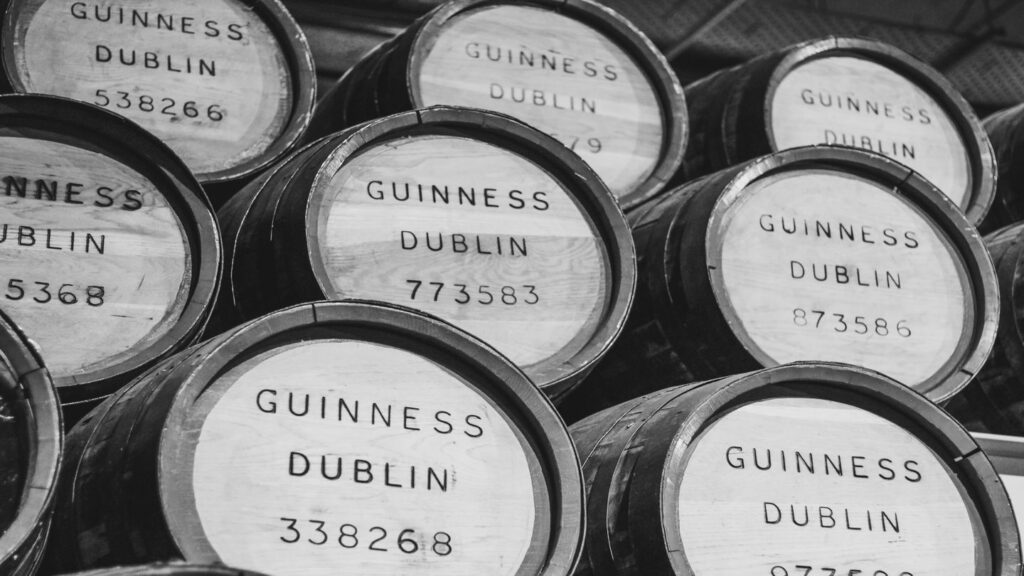

How was Guinness invented?
While Arthur’s brewery originally only brewed ale, he began brewing porter (stout) in the 1770s. It was a new type of English beer, with brewer Ralph Harwood inventing it in London in 1722. Porter was different from ale as it was brewed from roasted barley, giving up a rich dark colour and aroma. Arthur’s dark, creamy porter became so popular, the Guinness Brewery was one of two official suppliers of beer to the seat of government at Dublin Castle. Five years later, it was the sole porter supplier.
By 1799, Arthur stopped brewing ales to focus solely on brewing his bold porter. He brewed the beer in different categories including single stout, double or extra stout, and foreign stout called ‘West India Porter’ which they exported. This beer is still brewed today under the name Guinness Foreign Extra Stout and it makes up 45% of all global Guinness sales.
When Arthur passed away in 1803 at the age of 78 (a great achievement in those days), the brewery was producing 20,000 barrels a year and had built up a successful export trade.
GET INSPIRED BY: Iconic Ireland and Ashford Castle
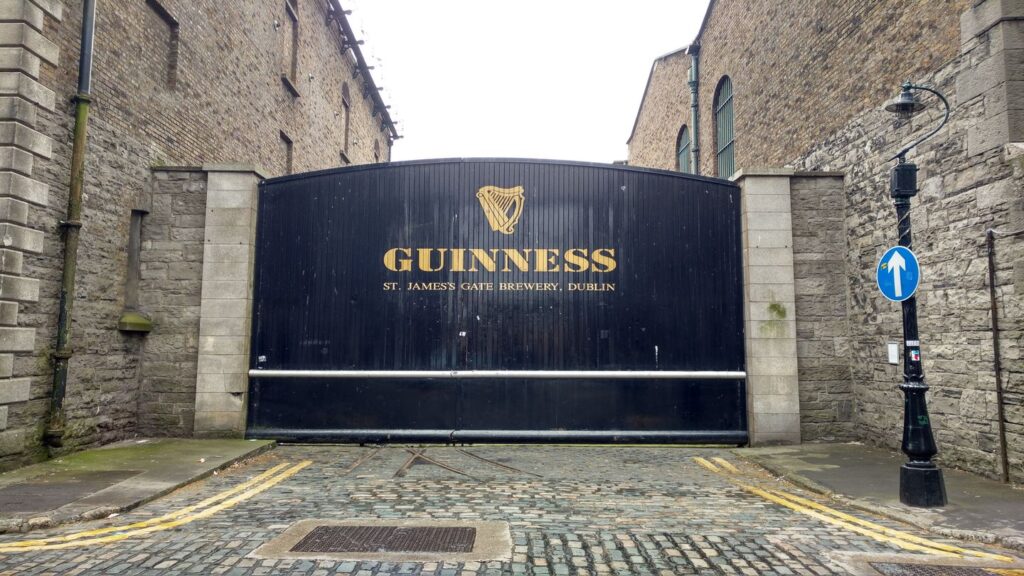

The 19th century
Arthur Guinness II
Arthur Guinness II inherited the business after the death of Arthur Guinness. This marked the beginning of an impressive brewing dynasty, with the business passing from father to son for the next five successive generations. Arthur Guinness II continued to expand the St. James’s Gate Brewery and by the 1830s, it was the largest brewery in Ireland.
Arthur II focused on the export trade, with shipments heading to destinations like New York, South Carolina, Lisbon, Barbados and Sierra Leone from the 1820s. Arthur II also oversaw the development of a new porter recipe, known as ‘Extra Superior Porter’. It was slightly stronger and aimed at the British market. You can still get your hands on it today under the name Guinness Extra Stout or Guinness Original.
RELATED CONTENT: Where you should travel next based on your beer preference
Benjamin Lee Guinness
Arthur II’s son, Benjamin Lee Guinness, took over the business in the 1850s. Under Benjamin, the business established the first trademark label for Guinness Stout in 1862. The trademark label included iconic features that are still in use today like Arthur Guinness’ signature, Harp device and the name GUINNESS. The business’ success elevated the Guinness family’s status and Benjamin became Lord Mayor of Dublin in 1851. He also contributed around £150,000 to restore St. Patrick’s Cathedral.
GET INSPIRED BY: Ireland’s Legendary North
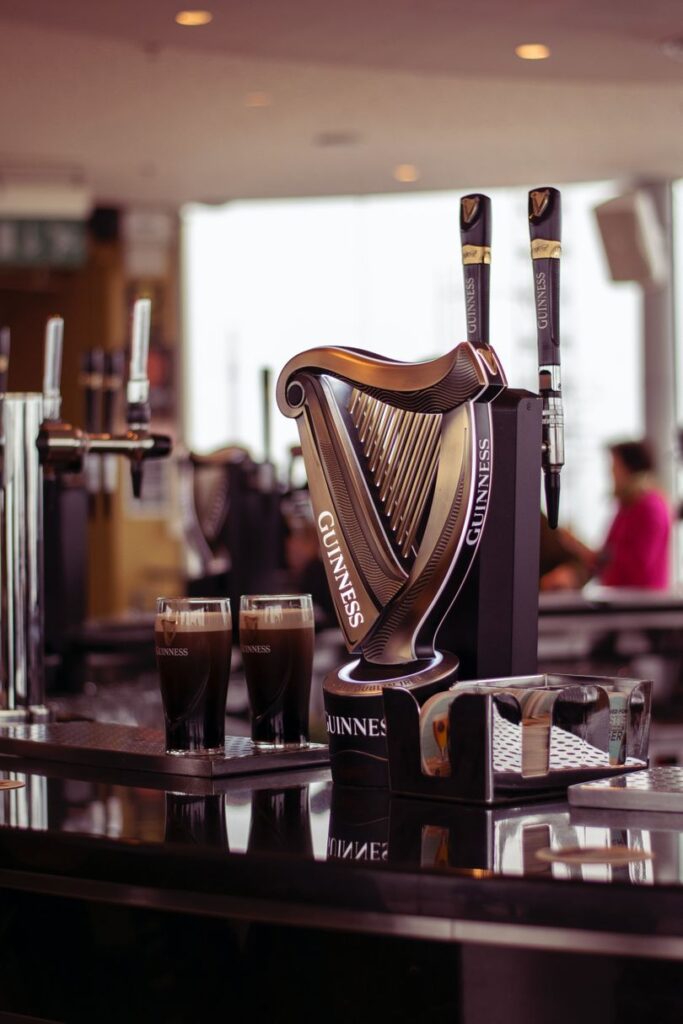

Edward Cecil Guinness
After Benjamin died in 1868, his son Edward Cecil Guinness took over the business. In 1886, Guinness was the world’s largest brewery and floated on the London Stock Exchange. It was the first major incorporated brewery and in 1886, Edward became the Chairman. A member of the Guinness family held this position until 1986. By the end of the 19th century, Guinness was producing 1.2 million barrels of porter every year and the brewery had expanded to 60 acres with its own railway and fire brigade.
Edward continued the family’s tradition of contributing to the city of Dublin and established the Iveagh Trust to provide affordable housing for the working class. The Guinness Brewery’s employees were also some of the highest-paid workers in Dublin, with benefits like pensions and healthcare that were not state-provided at the time.
RELATED CONTENT: Make it at home – Be My Guest host Catherine’s Beef & Guinness pies
Early 20th Century
By the 20th century, Guinness was the world’s largest brewery and a renowned international brand. In 1901, the brewery established a laboratory to enhance their brewing methods for years to come. After Edward died in 1927, his son Rupert Guinness became the new Chairman. Under Rupert the business expanded overseas, with the first international Guinness Brewery opening at Park Royal in London in 1936.
In 1929, Guinness launched their first official advertising campaign with the advertising agency S.H. Benson Limited. The agency created iconic posters and television advertisements including famous slogans like “Guinness for strength”. By the 1930s, Guinness had made its mark in history as the 7th largest company in the world.
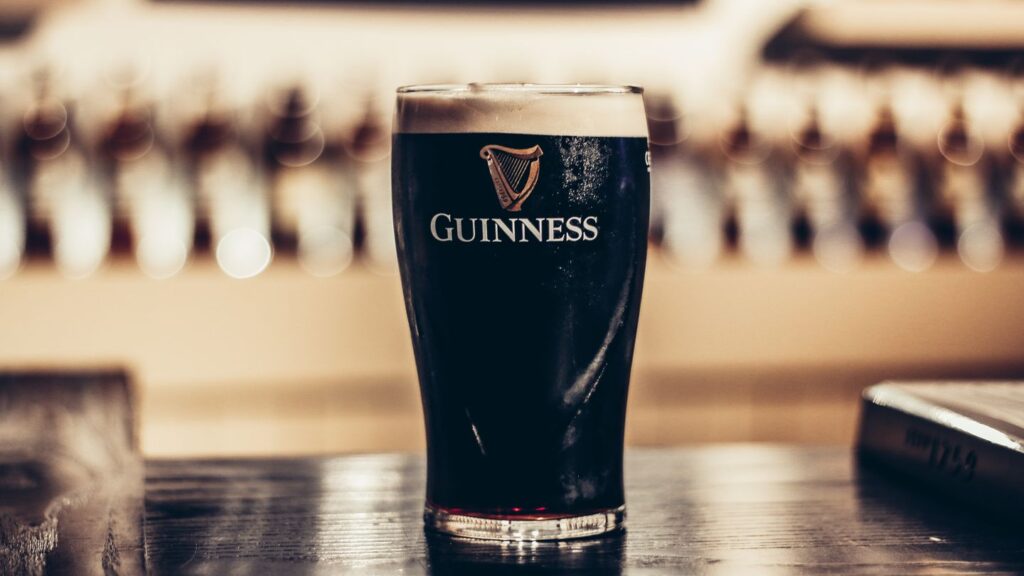

Mid 20th Century
In 1951, Guinness established a new company, Guinness Exports Limited, to bottle and distribute Guinness internationally. By 1959, they launched Draught Guinness, dispensing Guinness using a gas dispensing system in bars for the first time. The dispensing system produced that famous creamy head that Guinness fans still love today.
After the success of the Park Royal brewery in London, they built more international Guinness breweries in Nigeria in 1962, Malaysia in 1965, Cameroon in 1970, and Ghana in 1971. By the end of the 20th century, Guinness brewers were in 49 countries.
The original St. Jame’s Gate Brewery became one of the world’s most technologically advanced breweries. In 1996, it was one of the world’s first breweries to achieve ISO 14001, the International Environmental Management Standard.
The advancements kept on coming throughout the century. In 1973, Guinness changed the original recipe for the first time, using pale malt and isomerized hop extract. Guinness Draught in Can launched in 1988 with groundbreaking beer packaging technology.
RELATED CONTENT: 10 of our favourite Trafalgar guest stories from 2021
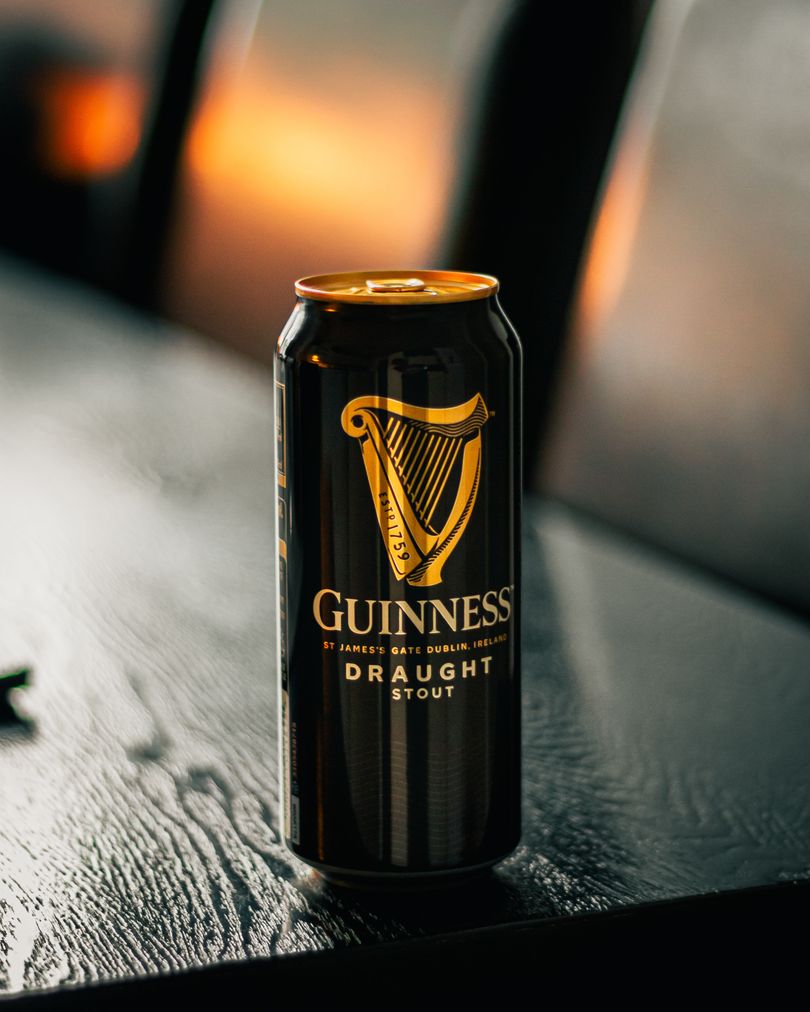

Do the Guinness family still own Guinness?
In 1962, Rupert’s grandson Benjamin Guinness became Chairman. He was the last Guinness family member to hold this position and held it until 1986.
In 1997, Guinness merged with another company, Grand Metropolitan, to form a company called Diageo PLC in a £24 billion merger. Diageo PLC retains the rights to all Guinness products and trademarks, so the beloved Guinness beer can remain the same.
The 21st century
The history of Guinness continues into the 21st century. In 2014, the incredible Brewhouse 4 brewery opened at St. James Gate in Dublin. It’s the largest stout brewery in the world and also one of the world’s most technologically advanced and sustainable breweries.
Today, there are Guinness breweries in over 60 locations. Guinness is sold in over 150 countries and a whopping 10 million glasses of the dark, creamy stout are enjoyed every day around the world!
Over the last three centuries, Guinness has become a legendary part of Irish culture, celebrated as Ireland’s national drink. And with over 8,000 years still left on the original St. James Gate brewery lease, there’s still a lot more of ‘the black stuff’ to make and enjoy.
Have you ever visited the original St. James Gate Brewery in Dublin to learn about the history of Guinness and enjoy a glass of Ireland’s national drink? Let us know in the comments below! If you haven’t, why not experience this iconic location and more on one of our trips to Scotland and Ireland?